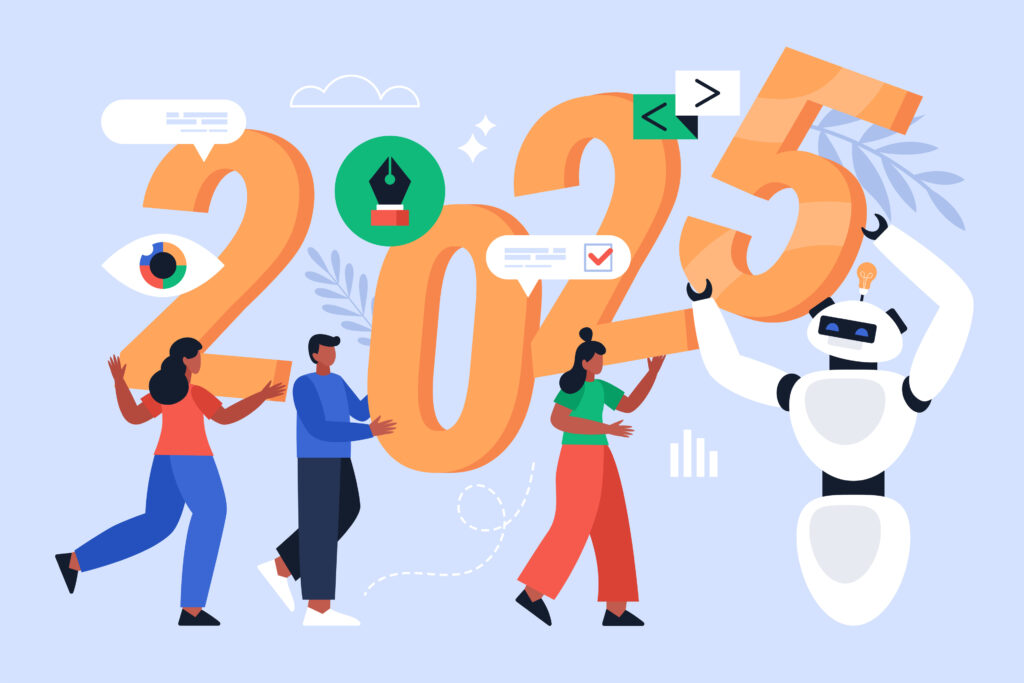Eric Sachs
SEO virtuoso, CEO @Sachs Marketing Group. Focused on being of service to business owners - helping to better position them in the eyes of their audiences.
SMG Marketing Makeover 2025 – What’s Working, What’s Not, and What’s Next
The digital marketing landscape in 2025 is undergoing a significant transformation, driven by advancements in AI, evolving consumer behaviors, and new platform dynamics. To stay ahead, businesses must adapt to these changes, embracing innovative strategies while reevaluating traditional approaches. From advertising tools powered by artificial intelligence (AI) to the shift away from traditional SEO strategies,…
Using Community Outreach as a Marketing Strategy
As a business, community outreach marketing is crucial to connecting to your local area. Developing a community outreach program not only helps to increase awareness for your products and services, but also strengthens your brand. Interacting with the local community gives you a chance to build relationships and nurture relationships with consumers, which helps your…
A Guide to Marketing Automation Using AI: How Artificial Intelligence Is Changing Marketing Forever
Marketing automation has long been a cornerstone of modern digital marketing strategy. It enables marketers to streamline repetitive tasks, nurture leads, and improve campaign efficiency. However, the integration of artificial intelligence (AI) into marketing automation is completely redefining what is possible. At Sachs Marketing Group, we stay on the cutting edge of AI trends, helping…
A Complete Guide to Google Performance Max (PMAX) for Healthcare
In today’s digital landscape, healthcare providers must leverage advanced marketing tools to reach the right audience. Google Performance Max (PMAX) is one of the most powerful advertising solutions available, offering a data-driven, automated approach to campaign management. But how does it work, and is it the right choice for healthcare organizations? This ultimate guide will…
Medical Practice SEO – The Ultimate Guide for Doctor’s Offices
Medical Practice SEO – The Ultimate Guide for Doctor’s Offices In the competitive world of healthcare, having a strong online presence is no longer a luxury—it’s a necessity. Patients are increasingly turning to search engines like Google to find doctors, specialists, and medical services near them. If your medical practice isn’t showing up at the…
10 Digital Marketing Ideas for Doctor’s Offices
10 Digital Marketing Ideas for Doctor’s Offices In today’s digital age, having a strong online presence is no longer optional—it’s essential. For doctor’s offices, this means leveraging digital marketing strategies to attract new patients, retain existing ones, and build trust within the community. At Sachs Marketing Group, we specialize in helping healthcare providers navigate the…
14 Valentine’s Day Marketing Ideas
Looking for Valentine’s Day marketing ideas for your business? Valentine’s Day is a holiday that presents an opportunity for businesses to connect with customers and drive results through targeted digital marketing campaigns. A successful digital marketing campaign leverages multiple channels and strategies to reach customers and promote products and services. This can include identifying the…
Local SEO for Doctors: A Complete Guide
Boost Your Practice’s Visibility with Local Search Engine Optimization (SEO) for Doctors In today’s competitive healthcare market, standing out is critical. Local search engine optimization for doctors helps your practice rank higher in search results, making it easier for patients in your area to find and choose your services. At Sachs Marketing Group, we specialize…
What It Takes to Run a Successful Digital Marketing Campaign in 2025
The digital marketing landscape is constantly evolving, driven by rapid technological advancements, shifting consumer behaviors, and ever-changing algorithms on search engines and social media platforms. In 2025, businesses face an even more competitive and complex digital environment, where success hinges not just on visibility but on creating meaningful connections with audiences across multiple channels. Today’s…
12 Holiday Marketing Ideas that Attract Customers
12 Holiday Marketing Ideas that Attract Customers Looking for some holiday marketing ideas that will help align your brand with your customers during the holidays? Holiday marketing is essential for businesses aiming to capitalize on the festive season’s sales potential. Effective holiday campaign planning involves starting early, strategic planning, engaging campaigns, and utilizing various channels…
How to Create a Digital Marketing Strategy (7 Steps)
Creating a digital marketing strategy involves identifying your audience, defining your objectives, evaluating competitors, and determining your marketing channels. You should also outline your content strategy, set up reporting tools to track performance, and delegate responsibilities to your team. Each step should align with your business goals for maximum effectiveness. Are you struggling to gain…
Why Building an Email List is Important in 2023
Building an email list is a crucial aspect of digital marketing. It offers direct communication with your audience, a higher return on investment compared to other marketing channels, personalization opportunities, audience segmentation, and can establish trust with your customers. Building an email list may feel like a daunting task, particularly if your business is new…
How to Manage PPC Campaigns Effectively (5 Steps)
You can manage PPC campaigns effectively by taking a strategic approach that includes keyword research, competitive analysis, landing page optimization, ad creation, and constant monitoring and optimization. Utilizing advanced tracking tools, implementing A/B testing, adjusting bids, and regularly updating keyword lists can significantly improve the performance and effectiveness of PPC campaigns. Every business yearns to…
14 Benefits of PPC Advertising for Rapid Growth
PPC advertising offers unique advantages over other advertising forms. It provides immediate visibility, precise targeting, and measurable results. Unlike traditional advertising, PPC campaigns can be quickly adjusted for better performance, making them ideal for businesses looking to stay agile in a competitive online environment. In the digital era, gaining online visibility has become a competitive…
How to Create a Digital Content Strategy that Drives Results
To create a digital content strategy, you first need to understand your goals and who your target audience is. Once you know those two things, you can start creating content that is interesting and useful to them. One digital content strategy might not work for all types of companies, so it’s essential to tailor your…
10 Thanksgiving Marketing Ideas that Attract More Customers [2024]
Implementing Thanksgiving marketing ideas online can significantly boost a small business’s visibility and sales. Incorporating seasonal themes and symbols into holiday marketing campaigns can enhance their impact, making them more memorable and engaging. This strategy also taps into the increased holiday shopping traffic, potentially attracting new customers and enhancing brand recognition during a key retail…
18 Spooky SEO Problems to Avoid this Halloween
SEO problems are the stuff of legend. They make for great campfire tales but can damage the real world. SEO horror stories often arise when a business is trying to optimize its website and makes a mistake that costs it dearly in terms of traffic and visibility. One common SEO horror story is the accidental…
10 Actionable Tips for Small Business Marketing in 2024
There are many tips for small business marketing, but three of the most important are building a strong organic presence through SEO, leveraging social media marketing to connect with your audience, and deploying highly targeted PPC ads to reach your ideal customer demographic. For the best results, measure your efforts across multiple marketing channels, track…
How To Manage Google Business and Ads
Optimizing Google Ads is super important for anyone doing online marketing. If you don’t keep an eye on your campaigns, you might end up spending a lot without seeing good results. Even if you have great ads, an awesome landing page, and the perfect audience, your campaign can still fall flat without proper optimization. Understanding…
What Are the Benefits of Local SEO?
Local SEO is a powerful tool for small businesses looking to increase their online presence and attract more customers from their area. By focusing on local search optimization, businesses can improve their visibility in search results, drive more traffic to their websites, and build stronger connections with their community. In this article, we will explore…
How to Design a Website That Converts
Designing a website encouraging people to take action is essential for online success. Understanding how users behave, creating interesting content, using effective design elements, implementing strategies focused on conversion, and optimizing for mobile devices can increase the chances of turning visitors into customers. Key Takeaways Understanding how users behave is crucial for website success. Compelling…



























